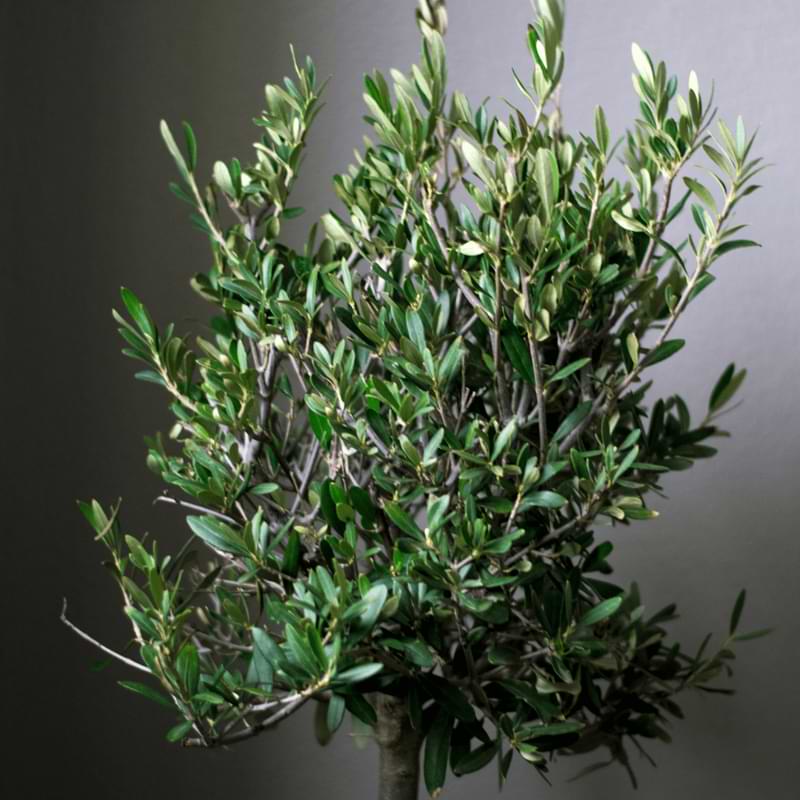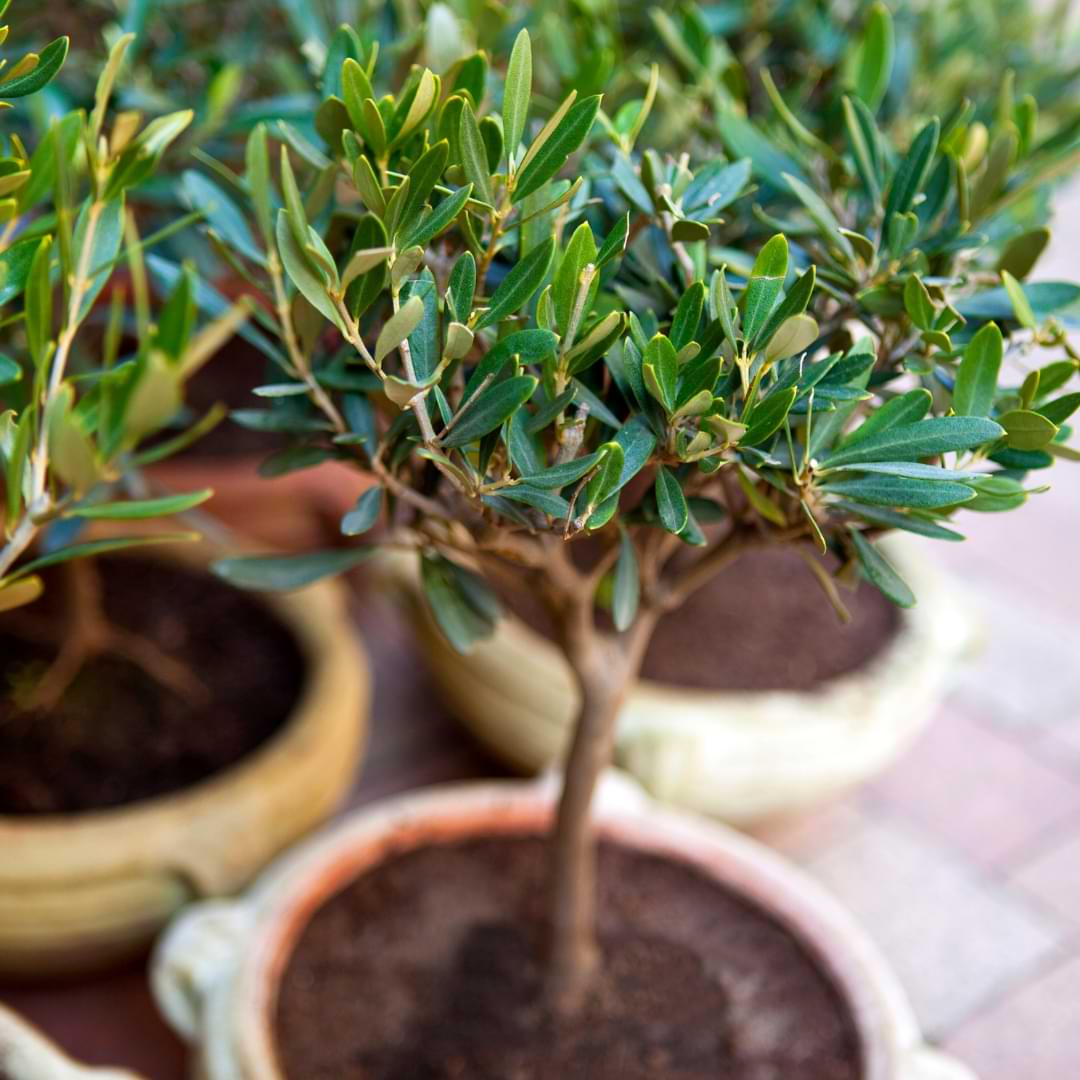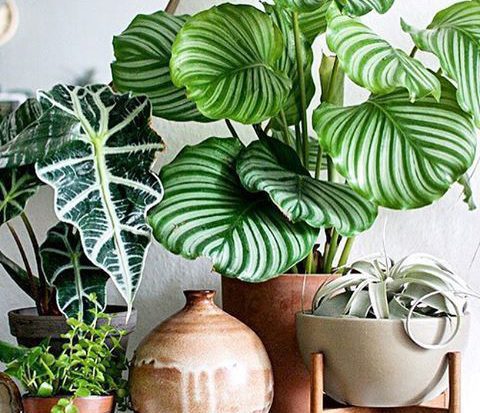Olive Trees to Grow Indoors
Move over fiddle leaf fig, there’s a new indoor tree in town!
Indoor olive trees are becoming more and more popular on social media and in design publications for the delicate, rustic mood they can add to a space.
Mostly native to the Meditarranean region, olive trees can be tricky to grow indoors. Most varieties grow quite large, and most cannot live indoors forever. In fact, most will last 9 years or so inside before they’ll need to be planted outdoors.
But you can grow smaller or even dwarf varieties indoors and manage their size with a little careful pruning!
And if you want to get really fancy (and don’t mind putting in some extra work), you can get these beautiful evergreens to bear fruit!
We’ve tracked down the best types of olive trees you can grow inside. If you’re ready to add some variety to your indoor garden, look no further!
Table of Contents
Olive Trees to Grow Indoors
1. Arbequina Olive Trees (Olea Europaea “Arbequina”)
Native to the Catalonia region of Spain, this variety is one of the best to grow inside because it only reaches a few feet high when confined to a pot. With the right temperatures and light conditions, it can flower and produce fruit its very first year.
2. Koroneiki Olive Tree (Olea Europaea “Koroneiki”)
This variety hails from southern Greece and is known for being more drought resistant than many other olive tree varieties, so it’s a good option if you have a habit of underwatering your plants.
3. Amfissa Olive Tree (Olea Europaea “Amfissa”)
This compact variety is a great option if you want to get in on the olive tree trend but don’t have a lot of space to grow a massive tree inside. Also known as the Greek Amfissa olive tree, this variety comes from central Greece and bears small fruit great for brining or making oil.
4. Mission Olive Tree (Olea Europaea “Mission”)
Originating in Spain and now common in California, these trees are more cold hardy than other olive trees, so this is a good choice if you live in a cooler area and tend to keep temperatures down in your home. This tree bears fruit that makes great oil and is also commonly brined for snacking.
5. Manzanilla Olive Tree (Olea Europaea “Manzanilla”)
Native to Spain, this slow-growing variety produces the most commonly eaten olives in the U.S.! (You know those pimento-stuffed green olives you snack on or see at the salad bar? That’s these guys!) You’ll have to do less pruning, but make sure to keep this tree away from drafts and cold temperatures.
6. French Picholine Olive Tree
This variety is easy to manage indoors if you keep it well pruned. It’s well-suited to indoor temperatures and looks beautiful in your space! This variety comes from France and produces a wonderful all-purpose olive.

How to Care for Olive Trees Indoors
All varieties of olive trees typically need at least 6 hours of full sun per day and regular watering during the growing season.
During the spring, summer, and early fall, make sure to water when the top inch of soil dries out. Water less in the winter while the tree is dormant.
Olive trees also like hot, dry conditions, so don’t be afraid to put them in the hottest part of your house. And there’s no need to buy a humidity tray or humidifier for these plants!
If you want your tree to grow fruit, you’ll also want to provide a few months of cold conditions around 50 degrees Fahrenheit. If you live in an area with mild winters, you can put them outside or near a cool window.
Indoor Olive Tree Soil
Make sure to choose a fast-draining soil like a nice, grainy cactus mix. You might also want to mix in a few handfuls of perlite or bark to increase drainage and aeration. Make sure your pot drains well, and empty the drainage tray immediately after watering.
Your tree will need to be repotted every few years, and make sure to switch out the soil for a fresh batch each time.
How To Prune Olive Trees Indoors
Pruning your olive tree is important to manage its size and to help it bear fruit if that’s your goal.
As a rule, avoid pruning the first year. Size shouldn’t be an issue the first year, even if you’re not looking for fruit.
Afterward, you’ll want to keep your tree’s mature shape in mind when you’re pruning and shaping the plant. Make sure to prevent crowding so that all areas of the tree get plenty of light and airflow.
If you want your tree to fruit, make sure to leave the new growth but trim any shoots that grew fruit the year before (olive trees never fruit from the same spot twice!).
Fertilizing Indoor Olive Trees
During the growing season, fertilizer your olive tree 2-4 times per month with a balanced liquid fertilizer with a 1-1-1 NPK ratio. Avoid fertilizing in the winter.
Are olive trees to grow indoors the next big thing? Maybe!
If you’re a fan of beautiful indoor trees, check out our most popular care articles!




